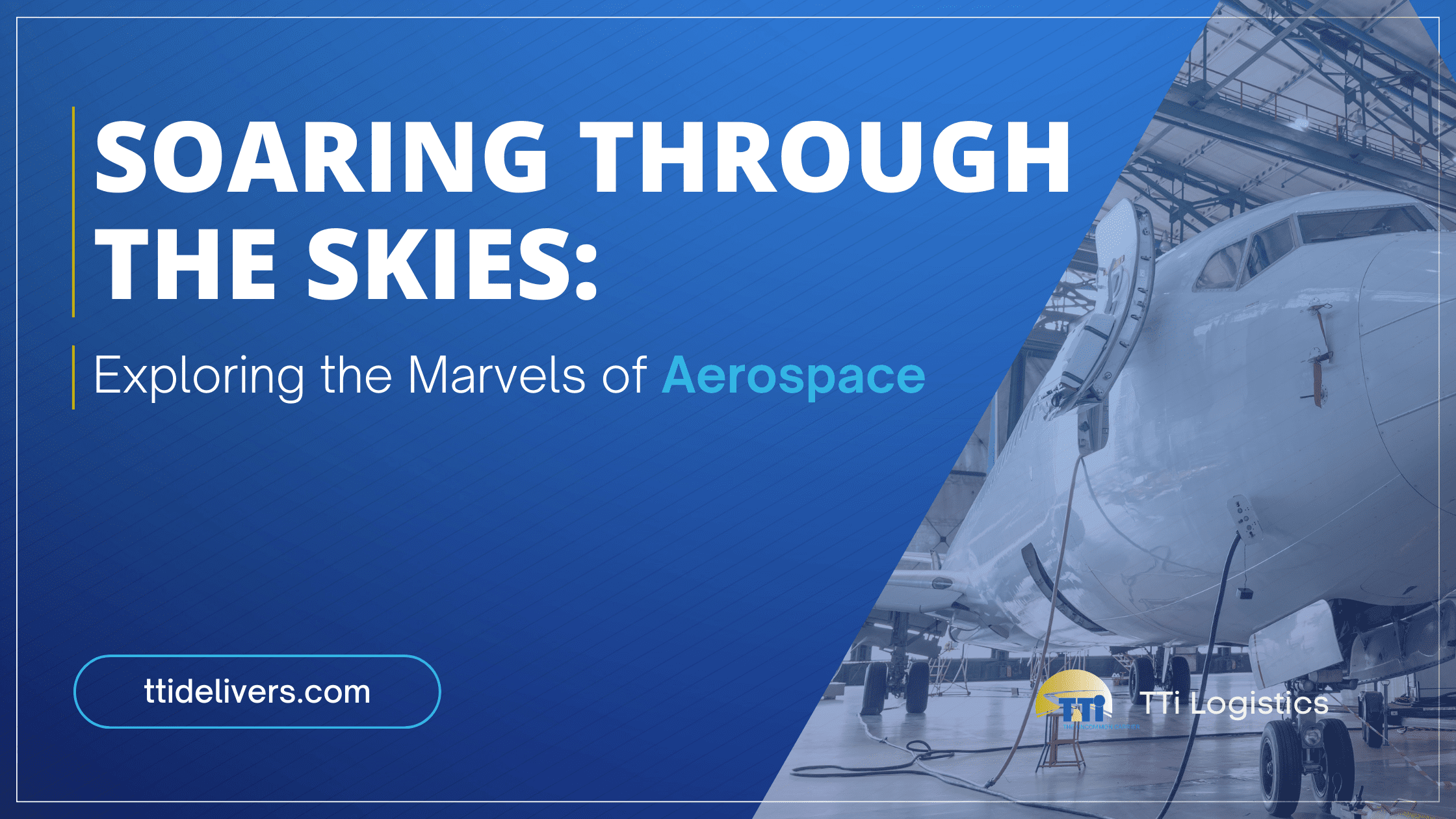Journeying Beyond Earth: A Dive into Aerospace Marvels
In the realm of transportation and logistics, few industries capture the imagination and ambition quite like aerospace. As humans, we’ve always had a fascination with flight, and aerospace represents the pinnacle of our technological achievements in this field. From the earliest hot air balloons to modern spacecraft exploring the cosmos, aerospace encompasses a vast array of disciplines, innovations, and possibilities. In this blog, we’ll delve into the awe-inspiring world of aerospace, exploring its history, current advancements, and future prospects.
But before we embark on our journey through the skies, let’s take a moment to introduce ourselves. We are TTi Logistics, a renowned logistics company with a reputation for reliability, responsiveness, and professionalism. For 30 years, we have been providing top-tier transportation, trade show, high-value products, and warehousing services. Our commitment to excellence has driven our expansion throughout the country, supported by strategic investments in equipment, technology, and, most importantly, our people. As an agent of UniGroup, the parent company of Mayflower and United Van Lines, we are proud to extend our quality services through this world-class network.
The Dawn of Flight: A Historical Overview
The dream of flight has tantalized human imagination for centuries. From the mythical tales of Icarus to the pioneering efforts of Leonardo da Vinci, our ancestors yearned to defy gravity and soar like birds. However, it wasn’t until the late 19th and early 20th centuries that this dream began to materialize into reality.
In 1903, Orville and Wilbur Wright achieved the first powered, controlled flight in Kitty Hawk, North Carolina, marking a pivotal moment in human history. Their rudimentary aircraft, powered by a gasoline engine, managed to stay aloft for a mere 12 seconds, but it laid the foundation for the rapid advancements that followed.
The decades that ensued witnessed a flurry of innovation and experimentation in aviation. From the development of monoplanes and biplanes to the refinement of aerodynamics and propulsion systems, aviation quickly evolved into a viable mode of transportation.
The First World War served as a catalyst for aviation technology, with aircraft playing crucial roles in reconnaissance, combat, and strategic bombing. Innovations like the synchronized machine gun and aerial tactics such as dogfighting transformed the nature of warfare and accelerated the pace of technological development.
The Golden Age of Aviation
The period between the two World Wars is often referred to as the Golden Age of Aviation. During this time, aviation witnessed unprecedented growth and innovation, fueled by both military conflicts and civilian demand for air travel.
Commercial airlines emerged, offering luxurious and exotic journeys across continents. Aviation pioneers like Charles Lindbergh captured the world’s imagination with their daring solo flights, while engineers pushed the boundaries of technology with faster, more reliable aircraft.
Aviation played a crucial role during World War II, with rapid advancements in aircraft design and manufacturing. Iconic planes like the Spitfire, Mustang, and B-17 Flying Fortress became symbols of courage and ingenuity, shaping the course of history.
Breaking the Sound Barrier and Beyond
The latter half of the 20th century saw even more remarkable achievements in aerospace. In 1947, Chuck Yeager shattered the sound barrier in the Bell X-1, demonstrating that supersonic flight was not only possible but within reach. This breakthrough paved the way for the development of faster and more advanced aircraft, including the iconic Concorde, which offered supersonic passenger flights until its retirement in 2003.
Meanwhile, the Space Race between the United States and the Soviet Union propelled humanity beyond the confines of Earth’s atmosphere. The launch of Sputnik 1 in 1957 marked the beginning of the space age, followed by Yuri Gagarin’s historic orbit of the Earth in 1961. The Apollo missions culminated in the first human steps on the moon in 1969, a feat that remains one of humanity’s greatest achievements.
Modern Aerospace: Pushing the Boundaries
Today, aerospace continues to push the boundaries of what is possible. Commercial airlines transport millions of passengers and cargo around the globe every day, connecting distant corners of the world in a matter of hours. Modern aircraft are safer, more efficient, and more environmentally friendly than ever before, thanks to advancements in materials, design, and technology.
At the same time, space exploration has entered a new era of innovation and collaboration. Private companies like SpaceX, Blue Origin, and Virgin Galactic are revolutionizing space travel, with ambitions ranging from commercial space tourism to the colonization of Mars. Meanwhile, government agencies like NASA and the European Space Agency are planning ambitious missions to explore the outer reaches of our solar system and beyond.
Advancements in aerospace technology have also led to the development of unmanned aerial vehicles (UAVs), commonly known as drones. Originally used for military purposes, drones have found applications in various industries, including agriculture, photography, surveillance, and even delivery services. Their versatility and cost-effectiveness make them valuable tools in numerous fields, with ongoing research and development aimed at expanding their capabilities further.
The Future of Aerospace: Towards New Horizons
As we look ahead, the future of aerospace holds limitless possibilities. Technologies like electric propulsion, autonomous flight, and additive manufacturing are poised to revolutionize the industry, making air travel more accessible, sustainable, and efficient.
Furthermore, the rise of space tourism and the prospect of commercial space mining offer tantalizing opportunities for exploration and economic development beyond Earth’s atmosphere. Whether it’s establishing a permanent human presence on the moon, terraforming Mars, or unlocking the mysteries of the cosmos, the future of aerospace promises to be as exciting as it is challenging.
Embracing the Skies: Navigating the Future of Aerospace
In conclusion, aerospace represents the pinnacle of human ingenuity and ambition. From the earliest dreams of flight to the modern-day marvels of space exploration, it has captivated our imagination and pushed the boundaries of what is possible. As we at TTi Logistics continue to provide top-tier transportation and logistics services, we are proud to be part of an industry that inspires wonder, curiosity, and innovation. Together, let’s continue to soar to new heights and explore the endless possibilities of aerospace.







